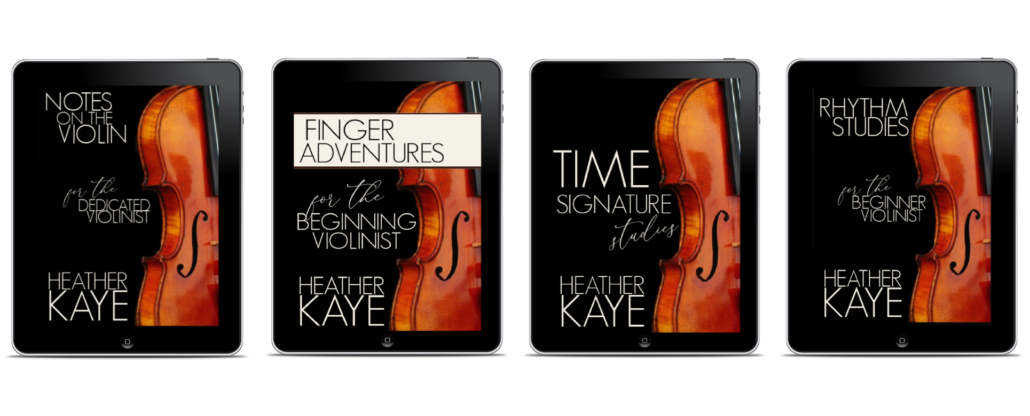Don’t halt your progress reading numbers and not notes
Yes, you read the heading right….
NOTES ARE NOT NUMBERS…..
Many method book editions actually weaken the violinists reading skills by putting numbers above the notes. In all actuality, the only numbers needed for playing the violin are to let you know when you are changing positions or needing to play a C# with a 3 because the 2 was preoccupied.
Student violinists may read numbers for years without the teachers knowing or even knowing themselves that this is only setting up a major frustration meltdown when it is necessary to change positions on the violin and OH NO….that number reading doesn’t work anymore.
Violinists have to read note names.
What exactly do I mean by note names? The letters of the notes: A, B, C, D, E, F and G.
Reading by number also is no help to understanding how a key signature affects the notes on the page.
Want to be a better sight-reader? Read notes not numbers.
Need help getting started? Click below to check out my Note Reading for Violinists eBook Bundle.
Note name association helps with intonation
With numbers there is no pitch correlation. If the note name is known, the ear can help be a guide; for example, the note “B” has a unique sound and if you only know this pitch by A1 and not by the fact that this pitch can be played in multiple places on the violin with all different fingers and octaves, there is no foundation for healthy intonation to blossom.
I have worked with many students that had a previous teacher that did not teach them how to read music. It is a very difficult process for the student to have to learn how to read music when their playing skills far exceed their note-reading skills.
Lack of note-reading skills makes it very difficult for the student in the long term. The day will come when the student becomes very frustrated that they cannot read music.
As the music gets harder, it gets more difficult for the student to remember everything about the piece learned in the lesson. As soon as they go home they cannot read the music to help them remember.
Playing in an orchestra is an absolute impossibility without knowing how to read music. When the frustration sets in for the student, a dislike for the instrument begins.
Note name knowledge is imperative for reading positions
How do violin notes compare to the piano
Learning positions outside of first position is extremely difficult for a student that does not read violin notes. They get confused because that 2nd finger can live anywhere on the instrument.
Always think note names not numbers. It is best to avoid the frustration altogether and learn note-reading:)
Note reading is a requirement for further study
In my Position Mastery program where I have taught violinists all over the world and all ages, 7 positions in 8 weeks, I have two absolute die hard requirements that students have to have in order to guaranty success in the program.
Can you guess?
- Note reading. If the student only reads numbers this program will not work for them.
- Experience with reading one other position outside of first position.
If you are a number reading violinist, hopefully this post has helped you realize a little pain now is better than years of frustration and halting progress in the future if you continue to read by number.
Violin notes are no different than piano notes in the treble clef for the right hand – they are exactly the same. Some people think violin notes are only for the violin but they are not. Violin notes are universal notes – notes used for all instruments that do not transpose.
The easiest way to start to recognize the notes by name is to start by differentiating between line notes and space notes.
Apply FACE for the space notes starting from bottom to top.
How does this relate to the violin? “A” in FACE is your the open “A” on the violin and “E” in FACE is the open E on the violin.
EGBDF “Every Good Boy Does Fine” is for the line notes starting bottom to top.
E=D1, G+D3, B=A1 D=A3 and F=E1.
After this is understood….constantly say the note names aloud while playing the violin at a slower tempo to ingrain in your mind the note names.
Please share in the comments which above tips you will be implementing into your daily practices sessions.






I learned a lot from this lesson
Excellent! Thanks for commenting.
Can confirm as someone who naturally thinks in numbers, it is a hard transition for me. I already played 2nd and 3rd position, and when my teacher talked about starting at a certain note, I always need to translate it in my head.
For me it has to components, knowing the names of the notes and understanding where they live on the strings. Because my muscle memory is strongly relying on first position, my fingers are confused when I switch to 3rd or so..